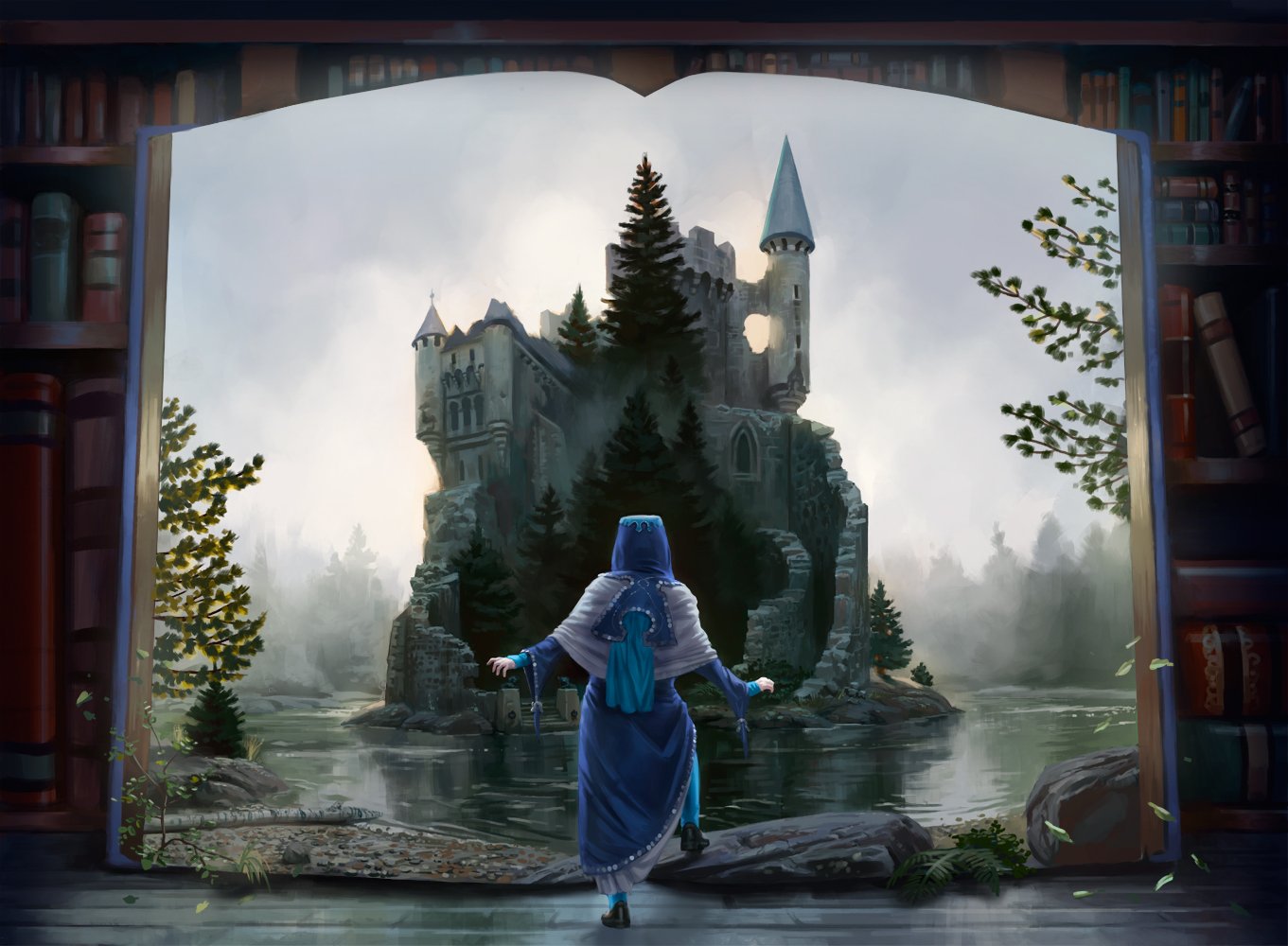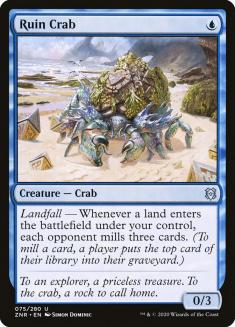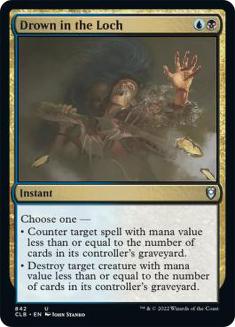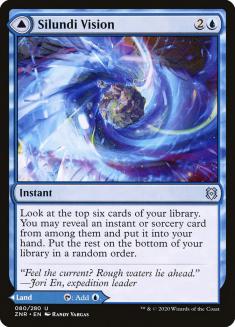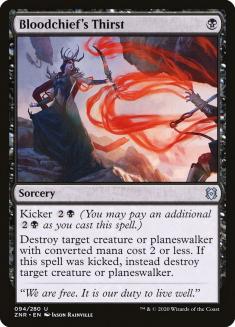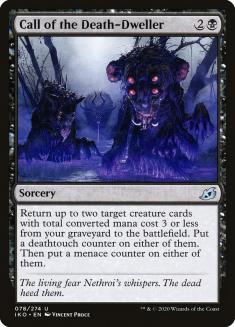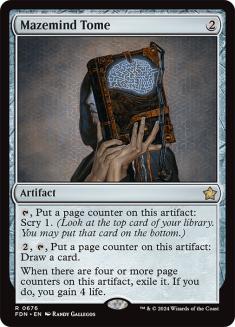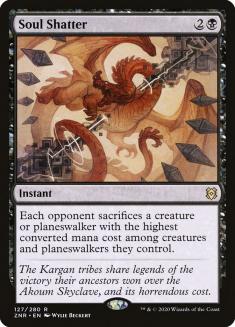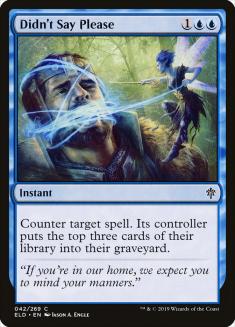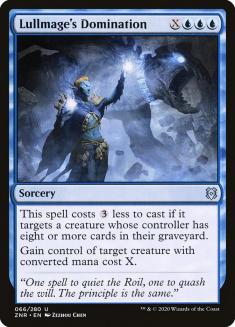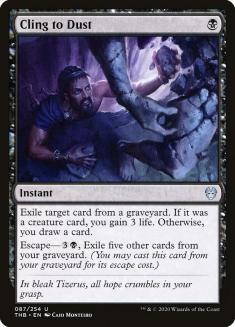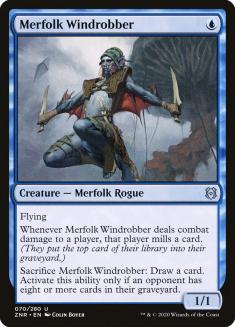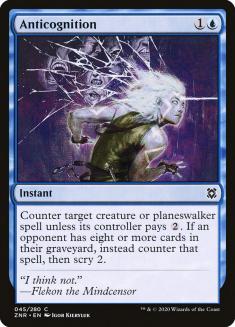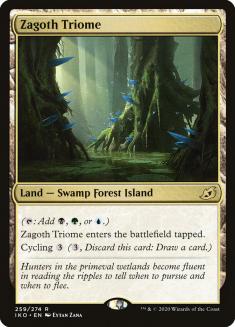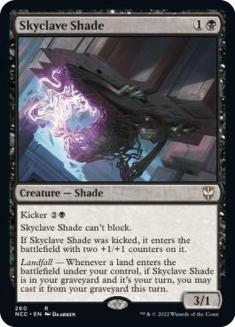The premise for last week’s article was that there wasn’t a deck that could go over the top of Golgari Adventures. It reigned undisputed for about one whole day before people figured out better Yorion, Sky Nomad and better Ugin, the Spirit Dragon decks.
RIP Golgari Adventures.
Now, we’re faced with the task of defeating the massive snowballing from Yorion decks. There aren’t many answers to Yorion decks. In theory, you could go under them with a great aggressive deck, but nothing like that exists. Going over the top with Ugin works to a degree, but those shells have been gutted by bans. They also don’t hold up under scrutiny. Trying to do the same thing but better leads to playing a slightly different Yorion deck.
Thankfully, we don’t have to work very hard because a natural predator already exists.
Creatures (13)
Lands (22)
Spells (25)

Honestly, my confidence level that this list is 100% correct is relatively low but that’s only because you have so many options. The plans and individual card choices are strong, so as long as you have a rationale for your choices, you should be fine. You can only get it so wrong.
That said, I do have some major qualms with how some of the current decks are being built. Ruin Crab is among the most contentious card choices. Including cards like Ruin Crab don’t make sense unless you’re trying very hard to enable Into the Story, as you still win the vast majority of your games through damage. Many versions include all four copies of Ruin Crab, as if it’s integral to the success of the archetype.
There’s a stark difference between Into the Story being online some of the time and most of the time. Merfolk Windrobber will rarely get it done by itself, so it needs some help and you can only play so many Thieves’ Guild Enforcers. I don’t lean on Ruin Crab in any matchup and I don’t plan to kill anyone with it, so why include four copies? You want to draw roughly one per game to get some cheap milling in but that’s it, so two seems like the correct number.
Drown in the Loch is obviously the star of both the removal and counterspells. After that, you need some other counterspells, but which ones? Going all the way up to Neutralize is viable, especially in a world defined by Yorion. How often do you actually cycle it though? There are instances, mostly in Game 1s against aggro, where it happens. It’s so rare that you might as well play Cancel with upside. Didn’t Say Please has enough of an added bonus, especially when we’re not playing many Ruin Crabs, that I’m happy to include it.
One of the reasons I believe in Dimir Rogues is because Zendikar Rising Standard isn’t in a place where you need to overload on spot removal. The green creature decks can lose to Lurrus recasting Thieves’ Guild Enforcer, plus they mostly lose to Yorion decks. True aggro isn’t much of a thing because of the lack of powerful early creatures, so you get a pass there too. Even if these decks do show up, you have a cheap mana curve and a good late-game, so you can often trade cards with them until they run out of gas.
My main form of creature interaction has been counterspells, which also happen to be the best way to interact with Yorion. If Anticognition wasn’t a strong option against both halves of the metagame, we’d have to work harder. Instead, we have the glue that holds the deck together. To some extent, Mystical Dispute functions similarly. It provides a huge edge against Yorion and mirror matches while being a serviceable, easier-to-cast Cancel most of the time against green decks.
Building around Lurrus of the Dream-Den is no longer necessary. In fact, the entire reanimation package has gotten much weaker due to Yorion’s assortment of removal that exiles. If your cards aren’t ever dying, Lurrus loses much of its luster. However, our deck would mostly stay the same, even without Lurrus, so what are we sacrificing by having a companion? Maybe we’d play some copies of Shark Typhoon or Brazen Borrower? Those cards aren’t integral to beating anything at the moment, so I’ll stick with Lurrus for now.
Silundi Vision is underrated. While you’d prefer to curve out most games, it’s also difficult to determine how many lands you actually want in your deck. If you draw the controlling portion of your deck, having a high land count is nice. If you draw the creature portion and cheap interaction, you can’t afford to flood out. The DFCs are necessary for mitigating those risks.
Your overall power level is so low, especially with cards like Ruin Crab that are effectively mana acceleration, that you can easily lose games without drawing Into the Story. Having Lurrus as a backup plan helps but it will almost certainly die after providing minimal value. At that point, you really need Call of the Death-Dweller or Agadeem’s Awakening to come back. Silundi Vision supports both of your late-game plans, so its addition has a low opportunity cost and adds some much needed consistency.
Sideboard games are obviously tricky because you have to balance how much you’re milling your opponent with the possibility of your opponents having cards with escape. At this point, it’s far more likely your opponents will have something with escape than not. Thankfully, decks that can maindeck escape cards like Kroxa, Titan of Death’s Hunger are getting beaten up by Skyclave Apparitions. If that changes, you need some amount of maindeck Cling to Dusts.
Sideboarding Guide
VS Azorius Blink (Yorion)
Out:
In:
The best play against Yorion is always going to be counter it. If you’re light on counterspells or generally playing more of a tap-out strategy, Whirlwind Denial is solid as a way to counter the trigger that would bring all their permanents back. Since we’re focused on stopping it from resolving in the first place, Whirlwind Denial is a weaker option than having more hard counterspells.
In case a Dream Trawler slips through the cracks somehow, like with an early Transmogrify, you’re going to want an answer, which is why I have a Soul Shatter. It’s more of a hedge than necessity, so cutting it isn’t out of the question.
VS Golgari Adventures / Mono-Green Food / Gruul Adventures
Out:
In:
Most of these matchups are similar since they’re green midrange decks. They have a clock but it’s slow enough that you can weather the storm. Since they usually can’t kill you quickly enough, they’ll have to interact with Lurrus at some point, which means your Call of the Death-Dwellers are relevant.
Ruin Crab doesn’t block particularly well and you should be focused on interacting with their early threats rather than enabling Into the Story as quickly as possible. It will get online eventually, so there’s no need to rush. Having Lullmage’s Domination online is usually a luxury, especially since you might not have triple blue until later.
Cling to Dust is meant to fight Ox of Agonas; Chainweb Aracnir; and Polukranos, Unchained. If you can’t find one early enough, the escape creatures will overpower you.
Against Gruul Adventures, you’ll want the Dead Weight for extra early removal.
VS Ramp
Out:
In:
There are a few different versions of ramp and how you’ll sideboard will vary against each. Still, this is a solid baseline. Against nearly every version, you’re going to want Cling to Dust for Chainweb Aracnir and counterspells for their big threats. If they don’t have Lotus Cobra or any creatures worth killing, the spot removal isn’t necessary. Either way, they usually won’t be interacting with your creatures, so Call of the Death-Dweller does very little.
VS Dimir Rogues
Out:
In:
This is one of the most intricate mirror matches I’ve seen in my career. Even something as simple as when to use Cling to Dust can have far-reaching consequences. For the most part, you’re going to want to stop their escape cards from weakening your copies of Into the Story, so play carefully. After that’s handled, it’s a matter of not getting beaten down or letting them resolve an Into the Story. Should none of that come to fruition, the game will be about Lurrus.
Skyclave Shade can be huge in the matchup, especially if cast on Turn 2. For that reason, it might be worth investing in a third copy. Your opponent won’t want to interact with it because of how easily it comes back, which means they’ll be taking consistent damage for much of the early-game. If they remove it and use a Cling to Dust, you can Cling their Cling and maintain an advantage. If both players are out of resources, it should very easily carry you across the finish line.
Solving the Big Bird
The correct answer to the Yorion problem is likely playing a Yorion deck that dominates the mirror. However, there’s no clear consensus version and many players are likely going to be engaging in the same arms race, weakening their standing against everyone else. Rather than get lost in that scrum, I’d much rather play Dimir Rogues. You’re a natural favorite against Yorion decks and have game against the other decks in Zendikar Rising Standard, so it’s the perfect choice for this weekend.

